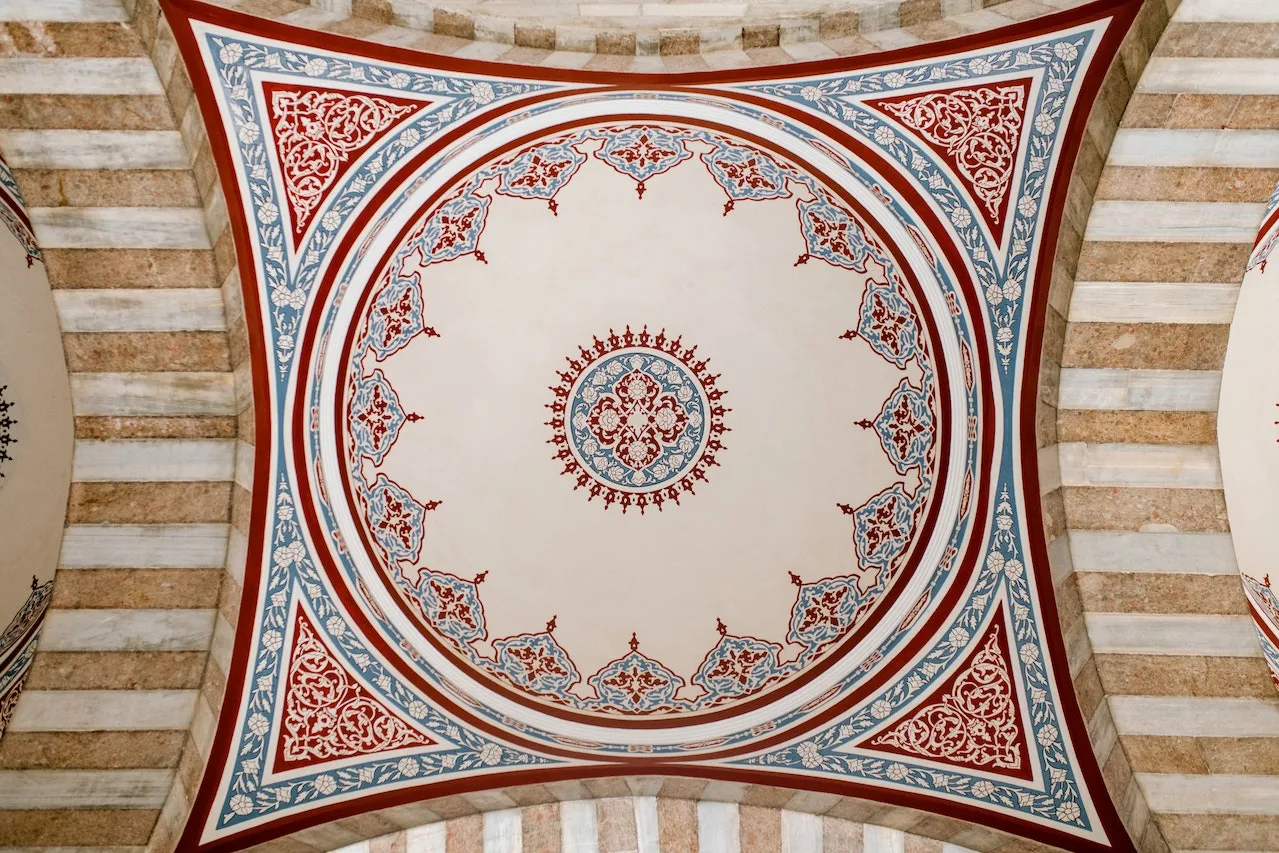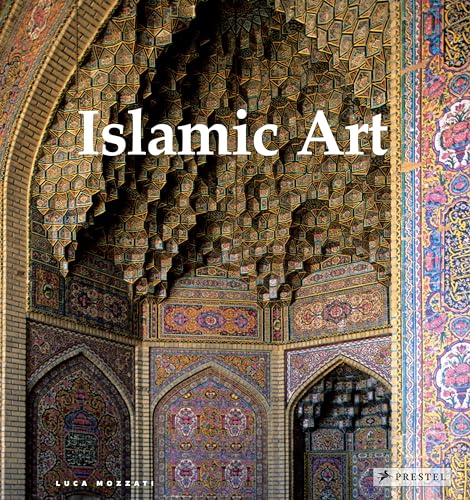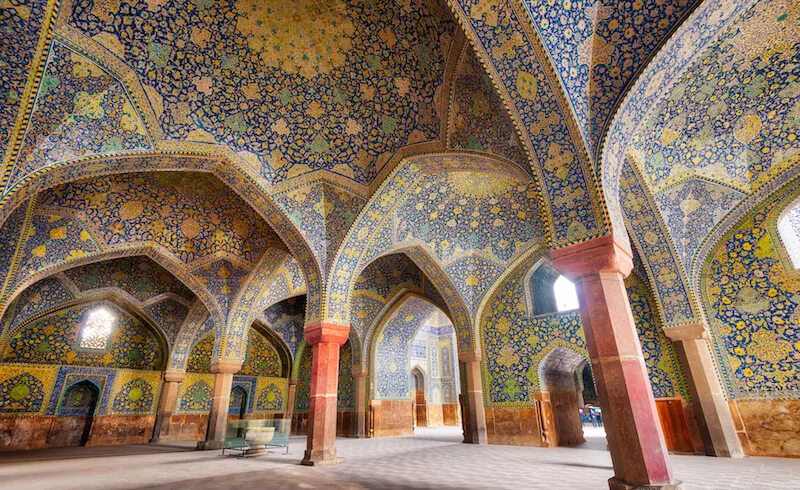Islamic Art and Architecture History
Islamic Art Historical Glimpse
Islamic art and architecture have a rich history dating back to the early days of the religion in the 7th century. But because Western art has largely overshadowed and surpassed Islamic art, it is sometimes described as "the hidden pearl".
While Islamic art can be found in Muslim countries around the world, it is also increasingly popular in the West. Our understanding of Islamic culture has grown over the last few decades, and so has our appreciation of Islamic art. It is an art that is based mainly on or has been influenced by the religion of Islam.
The Ancient Mesopotamia
It is known that Mesopotamia is considered to be the birthplace of all civilizations, and Islamic Art won't be an exception! It is here that the world’s first cities were founded and established. The art and architecture of Mesopotamia are thus some of the oldest in the world. So we can say then that the History of Architecture started here once upon a time...
One of the most iconic examples of Mesopotamian architecture is the ziggurat. These pyramidal structures were built as temples to the gods, and they were often decorated with complicated reliefs.
Another common type of Mesopotamian architecture is the city wall. These walls were intended to protect the city from invaders and were often decorated with reliefs or painted with murals. Mesopotamian art is characterized by its use of negative space, its use of rhythm and repetition, and its focus on the human form.
 |
| The city wall was intended to protect the city from invaders. Photo: eng.wikipedia.org |
Origin and Characteristics of Islamic Art
The Islamic art that evolved in the time following the death of the Prophet (P.B.U.H.) was mostly represented architecturally. This form emerged in countries where Islam persisted and manifested Muslim principles and beliefs in its motifs and themes.
As Islam spread over Africa and Egypt, as well as from Spain to Persia, Islamic art and architecture gained strength and significance. Several kinds of art were utilized to express Islam's uniqueness without the use of any pictorial representations. Its roots lie in the rich and artistic Arabian heritage.
It was developed over time by a unique combination of various arts, notably the Byzantines, the Copts, the Romans, and the Persians. Therein lies the greatest asset of this art, its skill to merge native designs with imported ones to achieve a completely distinguishable end result. The one common factor in all kinds of Islamic art is abstract and conceptual decorations and designs.
Oftentimes, it is characterized by its use of geometric and arabesque patterns, as well as its focus on calligraphy and inscription. Islamic artists seek to create art that is aesthetically pleasing and that reflects the values of their faith.
Most designs include curved and interlacing lines in bright and vibrant colors to enhance the various styles. Floral designs in the most brilliant colors distinguish the most valuable pieces of art and architecture throughout the world. (see photo below)
 |
| The beauty of Islamic Art: Ornamental ceiling with a colorful oriental mural in the mosque, Photo by Julia Volk |
One of the things that makes Islamic art so unique is the way that it is both deeply connected to religion and yet also highly stylized and decorative. Islam has a strong tradition of art and architecture, and much of it is based around the central mosque. The basic floor plan of a mosque is based on a simple octagon, with a prayer hall and a minaret, or tower, for the call to prayer.
What is Islamic Art and its components?
Islamic art is often associated with geometric patterns and Arabic/Islamic calligraphy wall art, but there is so much more to it than that! Islamic Art is a general term that encompasses everything from architecture and pottery to jewelry and textiles. It is a hugely diverse and rich area of art, with a long and fascinating history.
So then, an Islamic ornament consists of a calligraphy pattern, a vegetable pattern, a geometric pattern, and a figural pattern. However, the Muslim world is a vast and varied one, and so Islamic architecture or Mosque Architecture varies considerably from place to place. In some cases, such as the soaring domes and minarets of Istanbul’s Blue Mosque, the architecture is highly ornate and highly stylized. Others, such as the simple mosques of rural Afghanistan, are much more utilitarian and functional.
Islamic art is also characterized by its use of Islamic calligraphy, wall art, or beautiful handwriting. This can be seen in everything from Islamic wall art to BOOKS and documents. Islamic calligraphy is an incredibly important part of the culture and is often used to embellish buildings and objects.
From the seventh to the tenth century, in the early Islamic period, the most notable art form was calligraphy (handwriting). This affects the decorating text, including the use of ornamental motifs and decorations to improve the appearance of walls and architectural elements in palaces, mosques, and homes. Islamic Calligraphy uses sayings and verses from the Holy Quran, and is, therefore, one of the most dignified art forms. It primarily uses two symbolic scripts, 'Kufic' and 'Naskh.'
As mentioned earlier, Islamic art also encompasses a wide range of media, including architecture, calligraphy, painting, and sculpture. It is a product of the Muslim World, which contains a diverse range of cultures and experiences.
The diversity of Islamic Art
The current state of such art is believed to have appeared during the reign of the Umayyad caliphate (661-750). Later, Islamic art and architecture encountered many varying periods. Therefore, this art is most commonly categorized according to the reigning empire when the artwork was created. The collections of most museums and art galleries that display Islamic art have been categorized by Muslim ancestry, including the Umayyad, Abbasid, Safavid, Ottoman, and Mughal.
As Islam is a mixed religion that encompasses people of varied ethnic backgrounds, Islamic art is also much more diversified to accommodate all ethnicities of its followers. Through the piece, the artist can depict many aspects of his or her personality through the harmony of various elements.
Additionally, it avoids any form of human or animal representation in it. According to Islamic belief, no one can replicate Allah's work. This type of art is characterized by floral, geometric, and abstract forms... Those interested in learning more about Islamic art history and its decline through time can also find many good books. (See the section below for a valuable book reference)
There are specific regional aspects of Islamic art that differ from one terrain to terrain, and location to another, to reflect that particular place's history.
 |
| Concrete fence around Suleymaniye Mosque in Istanbul-Turkish, Photo by Şeyda Nur Uğur |
Live Examples of Islamic Art
As it was mentioned before, there is no single characteristic that defines Islamic Art, as it is a wide and diverse field. However, there are some general themes and motifs that are often seen in Islamic Art, such as calligraphy, geometric patterns, and arabesque.
One of the most famous monuments of Islamic Art is the Taj Mahal, a royal mausoleum located in Agra, India. Although Hinduism is the predominant religion in India, thanks to centuries of Muslim rule, including the Mughals, India has a rich Islamic art and architectural heritage.
Islamic Architecture is probably the most important and prolific form of Islamic Art. The "Dome of the Rock (Qubbat al-Sakhrah)," in Jerusalem, built in 691 CE, is perhaps the oldest Muslim building intact in its original form. The use of domes within the construction has been an integral feature of Islamic Architecture, which was carried through to nineteenth-century Western architecture.
Similarly, "The Great Mosque of Cordoba," in Spain, and "Alhambra Palace," in Granada, show Roman-Byzantine marks and influences. "The Citadel in Cairo, Egypt, "Turkish Bath Houses (Hamams), "Caravan Inns (Caravanserai)" of Central Asia, and "Tombs" throughout the Middle East, are the fundamental examples of Medieval Islamic Architecture. Complicated and detailed tile works and geometric tiling were the main architectural components of this period.
Another famous edifice that refers to Islamic art is "The Great Mosque of Xi'an" in China. It is one of the oldest and best-preserved mosques in China. Although the mosque was first built in the year 742 AD, its current form was mainly constructed in 1384 AD and follows the layout and architecture of a contemporary Buddhist temple. (See photo below)
 |
| Great Mosque of Xi'an in China, Photo: chinahighlights.com |
A Book Recommendation
Would you like to enhance your learning knowledge of this topic? Then you are at the right place for doing so; What is better than reading to enlarge your knowledge?
This is the selection of the Editor's choice book for you, available today for your online shopping from AbeBooks.com at the enclosed link.
 |
| The book cover |
Here is the description of the book as it appeared on the affiliate program landing page:
This gorgeous survey of art from the Islamic world covers three continents and fourteen centuries. From its birth in the seventh century through modern times, the Islamic religion has inspired glorious works of art. This stunning book includes more than four hundred reproductions of treasures of Islamic art that span the world: from southern Europe, along the entire Mediterranean basin to sub-Saharan Africa through the Middle East, India, and Central Asia. Arranged geographically, the objects include paintings, miniatures, ceramics, calligraphy, textiles, carpets, and metal works. Each region is given a thorough introduction that offers historical context and extensive descriptions of its artifacts. Accompanying essays offer guidance in interpreting the many themes that tie these works together, including typology, calligraphy, and religious beliefs. Despite its wide-ranging history and origins, Islamic art is unified by its devotion to faith and beauty. With its large format, exquisite reproductions, and extensive research, this book is a thorough introduction to the Islamic artistic tradition.
.png)







